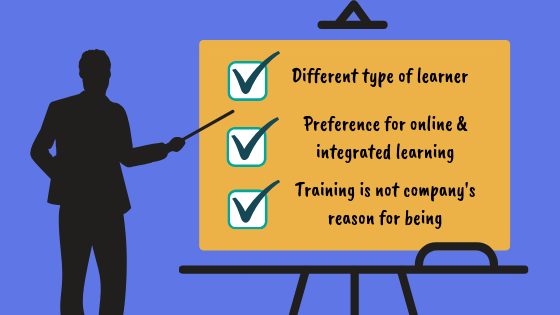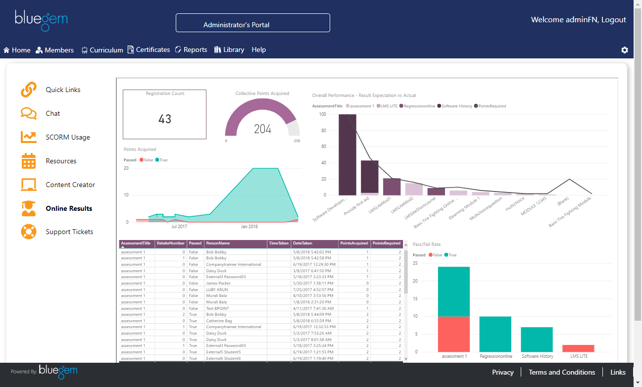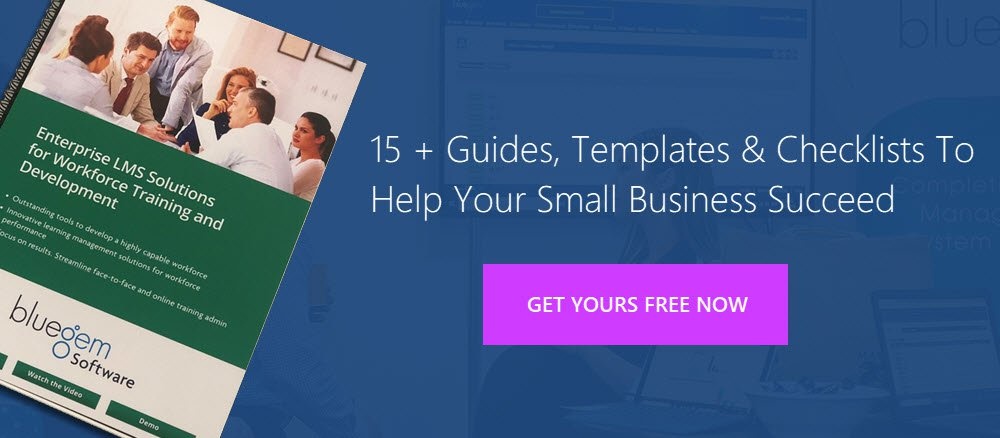A poor workman always blames his tools...

But what if the workman is right? What if his tools really are the reason the worker can't get the outstanding results his customer or his boss expects? And what if that workman didn't have the luxury of choosing those tools.
As an L&D professional one of the most import tools your organisation is likely to purchase is an effective Learning Management System. And if you don't want to be that 'poor workman' it's in your interest to be on the "tool selection panel", and to make sure your organisation purchases the best tool it can to enable you to deliver the results they expect. And 'yes', sometimes poor tools, and not the workman, are at fault.
1. You're not a school or a college

There are 3 reasons you, as a corporate / enterprise trainer need systems that differ from those that would normally appear on the shopping list of a training college:
- Different type of learner: Learning or student management systems designed for schools and colleges are intended for environments where students engage with a training or academic provider for the duration of a course. Once that student has completed the course and gained a certificate the training college is unlikely to see him or her ever again. Well, except perhaps when the certificate expires and the student needs to complete a refresher course. You, on the other hand, are managing the careers and professional development of your company's employees. You therefore tend to have a much longer ongoing relationship with your learners.
- Preference for online and integrated learning: Your employer wants learning to be effective, with minimal downtime or impact on productivity. So you, as a corporate trainer are more likely to use online or integrated learning than your training college counterparts.
- Training is not your company's reason for being: A third and important difference is that your organisation doesn't directly earn it's revenue from training. The training system is often just a small cog in a much bigger wheel. As such, it must integrate effectively with your HRIS, Finance and other industry specific systems. So effective and seamless integration with other business systems is generally more important for you than it would be for a training college. Because, in a training college the training /student management system is generally the primary system.
If a student management system that focuses on the needs of students and training colleges is not right for you then what is?
Here are the most important system components that a good LMS operating in a corporate training environment should include.
2. Capability Framework or Training Needs Analysis
This is the toolset that defines what skills and competencies are required in the your company to ensure that it can achieve it mission and strategic objectives. In its simplest form it identifies:
- The required roles or positions in an organisation
- The skills and capabilities that make up those roles
- The number of people required in each role
- The number of actual people competent and current to perform in those roles
- The training gap - Required vs. Actual competent and current people
* Current - in this context means meeting meeting professional development and experience criteria with non-expired competencies.
The best way for a system to present the capability framework is thorough an interactive dashboard. This gives you, as the L&D professional, managers and supervisors, and employees an organisation-wide view of how the company is performing in relation to training and professional development.
3. Organise Training Events and Workshops
If you aim to deliver all your training online build in time slots that discourage the "mañana syndrome" - "I'm busy, I'll do it tomorrow". And of course, tomorrow never comes. For instructor-led (or face-to-face) sessions that means scheduling classrooms, instructors and other resources. Like the Capability framework the Training Calendar should be highly visible and supported by reminder notifications and schedule-change notices.
Assessment and Verification of Competencies might be integral to the training events, i.e. employees are assessed at specified training events, or they may run independently, particularly if assessment includes on-the-job or practical activities that can't be easily chained to the training events. But these stages should also be backed up by notifications and reminders.
3. Enrol Employees into Courses
While it is common in a training college to have students enrol themselves into courses, this practice is less common in a corporate training environment. The exception being, professional development (PD) courses. That will be covered later. Employees generally participate in workplace training because the role demands. Training needs and requirements are determined by standing operating procedures that relate to the role, organisational priorities and availability. For that reason it is common for the admin team to work with managers to schedule training and enrol employees. But it is just as important to get employee 'buy-in'. Employees will be more accountable and show up for training if given the opportunity to accept. This can best be handled through calendar appointments, e.g. by sending an outlook calendar appointment that the employee accepts. Participation is greatly improved, by having the system send reminders and having managers / supervisors set training participation as a priority. This is a cultural discussion outside the scope of this article, but a debate well worth having.
4. Deliver, Assess and Verify Competencies
Manage a successful blend of online and instructor led training can be tricky, but well worth the effort. The convenience of online training modules can significantly minimise downtime and impact on productivity, particularly if content is well designed, engaging and supported on multiple platforms. But many would argue the benefits of dynamic interaction between instructors, mentors, employees and their colleagues leads to the type of results that could never be achieved in a prescriptive online course. Why risk losing either when it is possible to have both working successfully side by side in a good LMS? But those benefits and the environments that create them are common in workplace environments. Because work, projects, people, culture and processes have deeper roots in a team that spend more time together with common goals. They are less common in academic or training college environments. Systems designed by people who understand how to capture the essence of a team have a far greater chance of helping organisations to realise their true potential.

5. Accreditation and Rewards over Certification and Awards
While training colleges focus on Certificates and Awards the enterprise environment is more concerned with ensuring that people are accredited to perform in particular roles if and when accreditation is required. If it's not the focus is really about awards and recognition. That's where performance and talent management play an import role. Performance has real and tangible impacts including pay rises, bonuses, promotions and responsibility. Systems that recognise these distinctions deliver greater value to your organisation. That's not to say that people who successfully complete their training should not receive a certificate, it's just the degree of importance attached to it is different.
6. On-the-job training, exposure and experience
These round out the 70:20:10 model. Workforce planning and development experts recognise that only 10% of learning comes from the education and theoretical components of a program. Good corporate training systems also track the experience gained in performing in the role, and the level of immersion and exposure gained through peer discussions, professional development and performance reviews. While assessment results are easier to acquire and track, experience and exposure are actually more important in workforce development terms overall.

7. Dashboards and Reporting
When we were at school the yardstick of academic success was the report card, the grades. While reports are every bit as important in both training college and corporate training environments the data captured and tracked is generally different and the people who need access to the data are different players. Training Colleges collect data for all sorts of criteria but the most important data is the data that they need to report for funding and regulatory compliance, i.e. AVETMISS, TVET, RAPT, Completions and Surveys. A corporate training environment collects and tracks data ongoingly to:
- Identify people with particular skill sets
- Determine training gaps in the workforce
- Measure performance
- Identify talent and leadership
- Compliance
- Training effectiveness
While training colleges are obligated to track and report micro results, e.g. detailed activity, corporate reporting is often concerned with trends and snapshots for making decisions. For this reason there is higher emphasis on custom reports, authorised access, automation and the visual overview provided by graphical data more common in dashboards.

In summary,
A good corporate LMS places the priority on the concerns that are important to a corporate training environment. And as discussed above these are very different from the issues that a Learning, Training or Student Management System has to address in a school or college environment.

